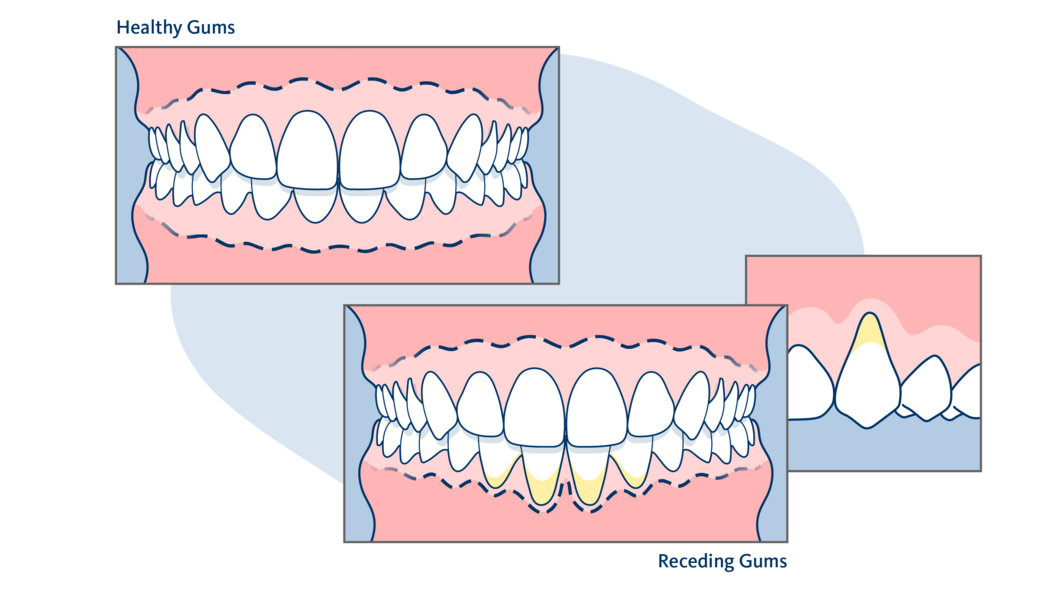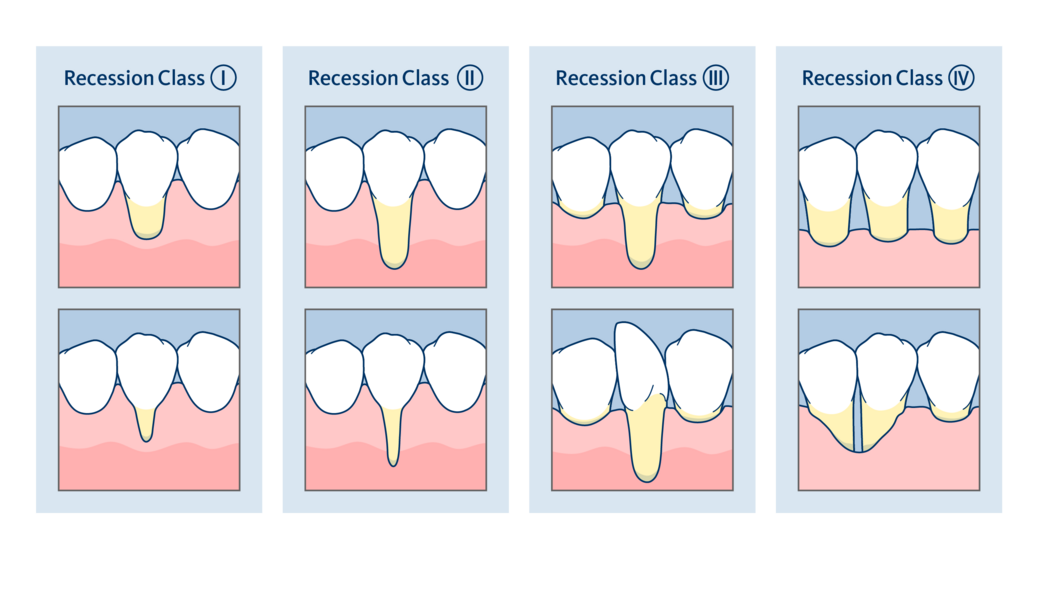Make your smile bright again
Smiling and laughter are part of daily life. However, both involve exposing your teeth and gum line. If receding gums are making you feel self-conscious and holding you back from showing off your pearly whites, it might be time to explore options to give you the confidence to start smiling again.
What do receding gums look like?
When gums recede, the tissue around the teeth draws back or wears away, exposing more of the tooth or root. Your gum line may no longer surround your teeth in a pleasing way. Receding gums is a very common issue and there are a number of ways to treat it.
What causes receding gums and what are the consequences?
Gums can recede for various reasons.
- Brushing your teeth too hard is a common cause
- Involuntary grinding, clenching or gnashing your teeth while you sleep
- Receding gums can also be a visible sign of underlying gum disease or periodontal disease
Mild gum recession may be barely visible. In cases of advanced periodontal disease, receding gums can be severe and large parts of the tooth roots may become exposed and the gum papilla may also recede, causing a sensitive tooth.
Advanced periodontal disease also leads to tooth mobility, which is when the tooth becomes loose in its socket. But also in such cases of advanced periodontal disease dentists today have highly efficient treatments at their hands to avoid tooth loss.
Having exposed roots changes more than the aesthetics of your smile. A single-tooth recession can already make the tooth sensitive for hot and cold, sweet or sour foods and drinks, and increases the risk of root caries developing.
How can receding gums be corrected?
You probably have many concerns and questions: How can I get my old smile back and say goodbye to hypersensitivity issues? Can my receding gums grow back? How do I stop them from getting even worse?
Unfortunately, your gums won’t grow back on their own. But if what’s causing your gums to recede can be identified and eliminated, dentists are often able to move the gums back into their original position via gum surgery.
The material and technique your dentist chooses to use for receding gum surgery will also depend on whether your gum recession is wide or small, deep or superficial, and whether your teeth are loose.
How does gum graft surgery work?
There are several gum graft surgery techniques you and your dentist can consider. Some approaches only require small incisions in the gums for an effective outcome, such as the Pinhole Surgical Technique. Other approaches involve making slightly larger incisions in the gum and then carefully pulling it towards the teeth.
Using a collagen matrix instead of a graft from your palate is much less painful and eliminates the need to create a second surgical site. Your dentist will be able to advise you on the surgical approach best suited to your situation and customise your treatment.
Recovery after gum graft surgery
Recovering from gum graft surgery takes a while, and it is important to follow the advice of your dentist while recovering. There are a few dos and don’ts you need to consider.
Nevertheless, it’s important to keep in mind that if the cause of your receding gums isn’t dealt with – be it brushing too hard, clenching your teeth or periodontal disease – the gum graft surgery may have been in vain, and the results might not be long-lasting.



